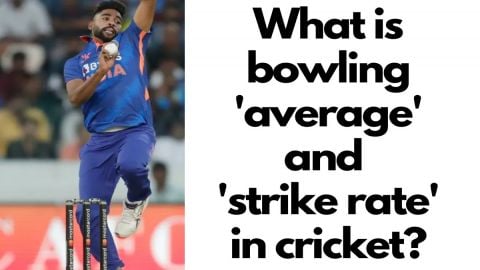What Does 'Strike Rate' And 'Average' Stand For Bowlers In Cricket?
Whenever we intend to judge a cricketer's performance with any purpose, we look at the player's numbers. Let's understand what a bowling strike rate/average stands for.

Whenever we intend to judge a cricketer's performance with any purpose, we look at the player's numbers – the number of matches he has played and how has he been performing. 'Average' and 'Strike rate' are important aspects to judge a cricketer's performance. Most of us are well versed in what these two means for a batter. Through this article, we tend to explain to our readers what it stands for in bowling.
In terms of batting, average means the number of runs a batter has scored per dismissal. To explain better, let's take an example. If a cricketer (called 'A') scores 600 runs in a tournament and has been dismissed 6 times, his average stands at 100 (600/6). Strike rate on the other hand gives us an idea of how fast the batter has scored runs.
Also Read
For example, if the Strike rate for a batter reads 200, that means the batter played at a pace of scoring 200 runs per 100 balls. The strike rate for a batter is calculated by dividing the runs scored with balls faced, and then multiplying it by 100. For eg, if a batter scores 50 runs in 20 balls, his strike rate would read 250.
In bowling, however, these things obviously have different meanings. A bowler's strike rate implies the number of balls the bowler has bowled before picking up a wicket. If a bowler has an average of 21, that means the bowler picks up a wicket after every 21 balls on average.
While bowling average stands for the number of runs a bowler conceded before picking up a wicket. For eg, if a bowler has a strike rate of 31, that means the bowler picks up a wicket after conceding 31 runs.
Also Read: Cricket Tales
In regards to batters, a high average and strike rate is preferred, as these would indicate the batter scoring more runs per dismissal and scoring at a faster rate. While for the bowlers, the lower the average and strike rate the better i.e. the bowler giving fewer runs or bowling fewer balls to pick up a wicket.
Win Big, Make Your Cricket Tales Now
